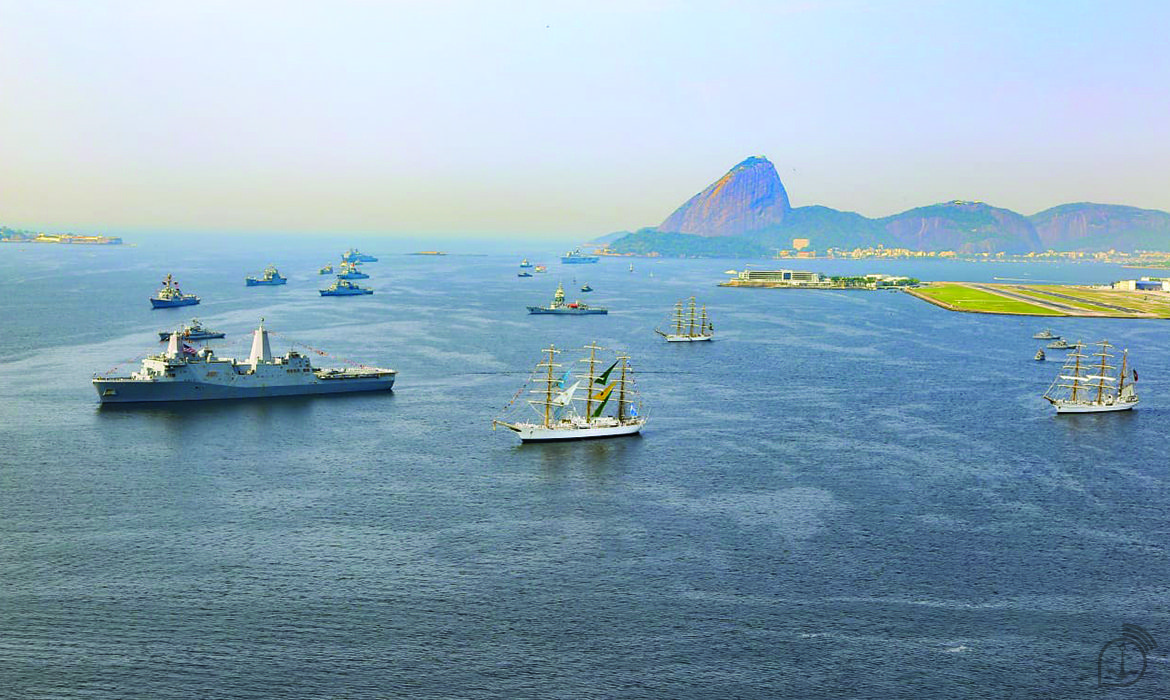Naval Review is part of the commemorations for the Bicentennial of Independence and the Brazilian Fleet
By First-Lieutenant (RM2-T) Vanessa Mendonça Silva – Rio de Janeiro, RJ
Just like the Naval and Naval Aviation Parade, which took place on September 7th, at the edge of the city of Rio de Janeiro (RJ), the Naval Review, held today (10), is also a traditional event. It enriches and tightens the bonds of friendship between the Brazilian Navy (MB) and the participating friendly Navies, bringing a very important meaning to the celebrations for the 200 years of Brazil’s Independence and 200 years of the Brazilian Fleet.
About the commemorative events, the Commander of the Navy, Fleet Admiral Almir Garnier Santos emphasized yesterday, in his speech to the Commanders of the friendly Navies, that “since its baptism of fire, in the War of Independence, the Brazilian Navy has acted decisively in various episodes throughout these 200 years of history, whose legacy is a free and sovereign Nation, united in one language and one culture.
The Navy Commander also pointed out that Brazil has no contentious issues with its neighbors or with any other nation in the world, and that it is committed to the defense of peace, the self-determination of peoples, equality among states, and the peaceful solution of conflicts, which are some of the fundamental principles enshrined in our Constitution. “It is this Nation that witnesses at this moment the meeting of several navies and coast guards from the most varied regions of the world. Today, more than ever, we can experience this comforting feeling of friendship and union that makes me have, even more, faith in the potential of our Navies as instruments to promote cooperation among nations, for the peace, security and prosperity of all,” he concluded.
Naval Review
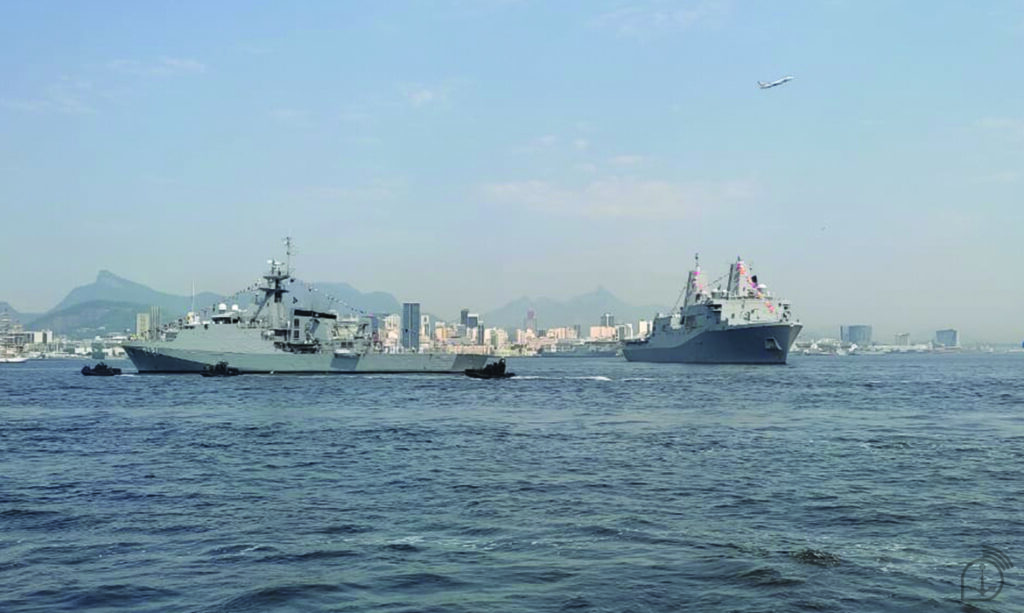
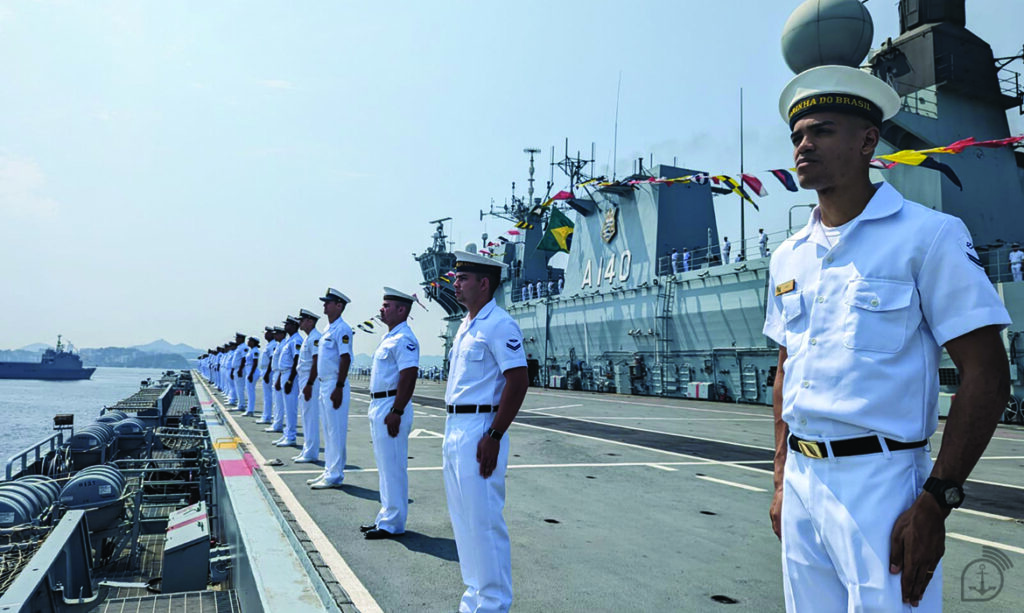
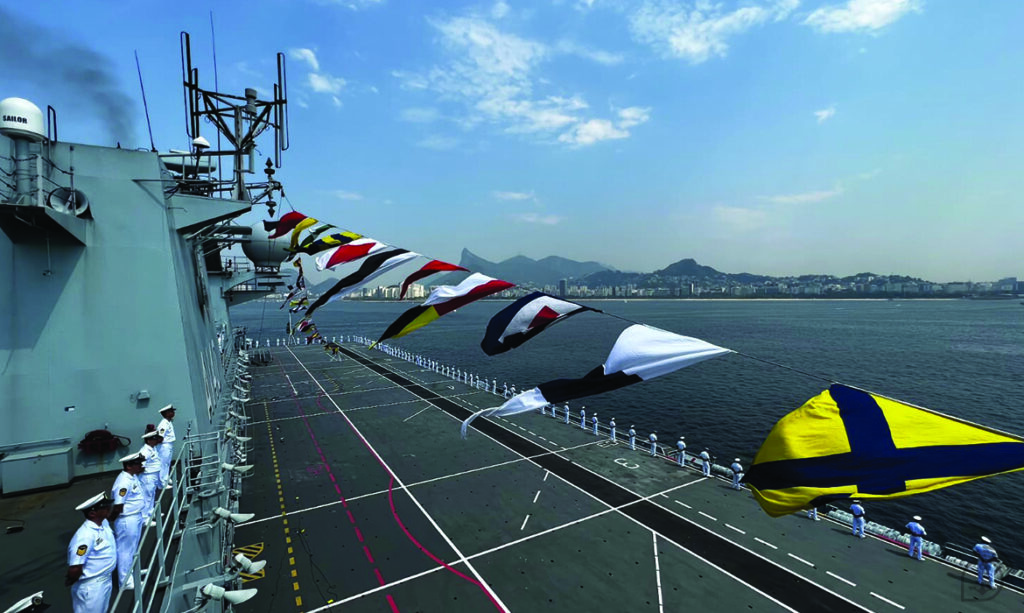
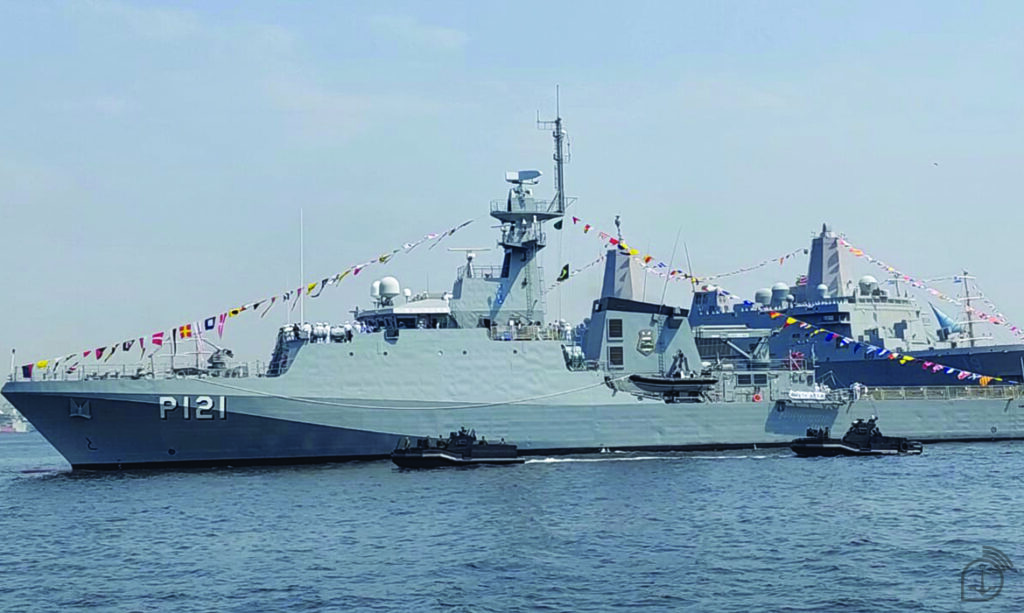
Twenty-three ships participated in the Naval Review, in Guanabara Bay, eleven of them Brazilian and twelve foreign. The ships, aligned in two columns, were reviewed by the President of the Republic, who was embarked in the Ocean Patrol Ship “Apa”. Following a naval tradition, the ships’ crews gave seven “cheers” to the President, which is a form of salute and salute to the authority that approaches the ships. In addition, three AF-1 fighters and a UH-15 “Super Cougar” aircraft flying the national flag flew over the graduation. At the end, there was a 21-gun salute.
“This event is of special importance, as it recalls historical and patriotic aspects for Brazilian society, besides strengthening the ties that unite the Navies. In 1922, on the occasion of the celebrations of 100 years of Independence, the Naval Review took place, which included ships from the navies of Argentina, the United States, Japan, Portugal, and the United Kingdom,” said the Commander of the 2nd Fleet Division, Rear Admiral André Luiz Andrade Felix.
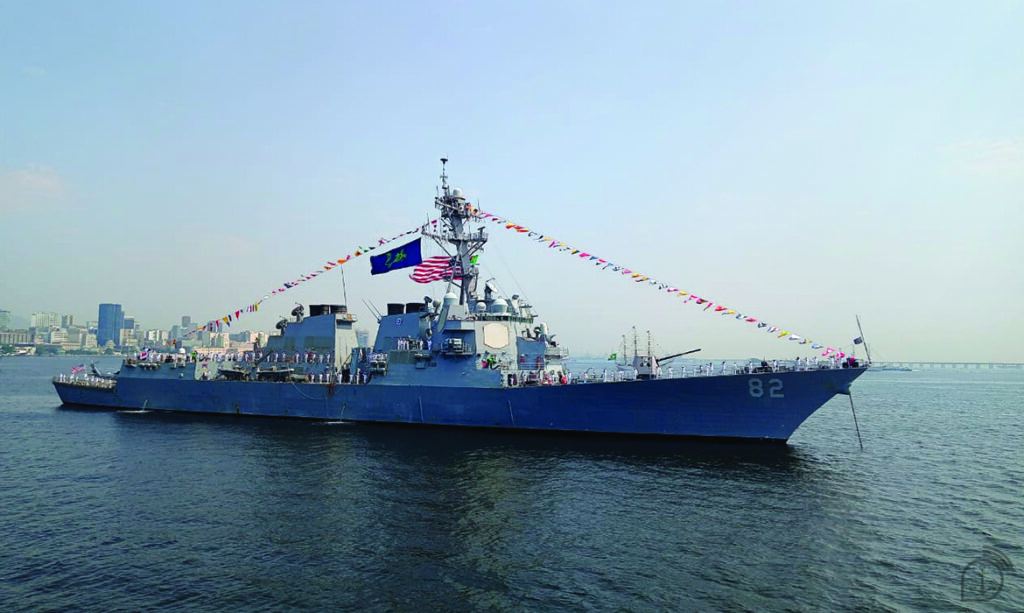
In the press conference held today, the Navy Commander highlighted that “this event demonstrates the good relationship and the importance that Brazil has with the other nations of the world. And the Brazilian Navy has a very important role in this diplomacy, called naval diplomacy. About the Naval Review, he explained that “it is an act of deference from friendly ships to an important authority of a country. In general this is done for the President of the Republic. In 1922, for example, President Epitácio Pessoa was aboard the cruiser ‘Barroso’.
Besides the Ocean Patrol Ship “Apa”, the three AF-1 fighter planes and the UH-15 aircraft, the MB ships and resources that participated in the Naval Review were Multipurpose Aircraft Ship “Atlântico”; Multipurpose Dock Ship “Bahia”; Combat Vehicle Landing Ship “Almirante Saboia”; Sailboat “Cisne Branco”; Frigate “Liberal”; Frigate “União”; Hydro-Oceanographic Ship “Cruzeiro do Sul”; Oceanographic Ship “Antares”; Patrol Ship “Maracanã”; and Submarine “Riachuelo”.
The ships of the friendly Navies that participated were: Polyvalent Ocean Patrol Vessel ARA “Piedrabuena” and ARA “Libertad”, of the Argentine Navy; Patrol Vessels (CNS) “Le Ntem” and “Lasanaga”, of the Cameroon Navy; Frigate FF-19 “Almirante Williams”, of the Chilean Navy; Amphibious Transport Ship USS “Mesa Verde” LPD-19 (San Antonio Class) and Destroyer USS “Lassen”, of the United States Navy; Ocean Patrol Vessel HMS “Forth”, of the British Royal Navy; Multipurpose ARM Ship “Libertador”, of the Mexican Navy; Multipurpose Ship “Elephant”, of the Namibian Navy; School Ship of the Portuguese Navy N. R.P. “Sagres”; and Rescue and Research Ship “Vanguardia”, of the Uruguayan Navy.
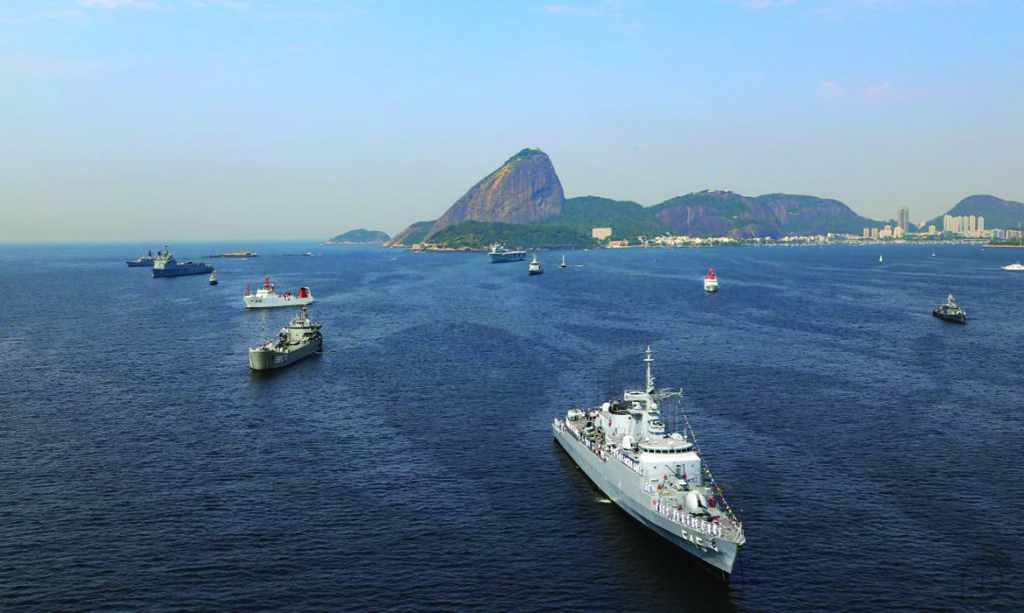

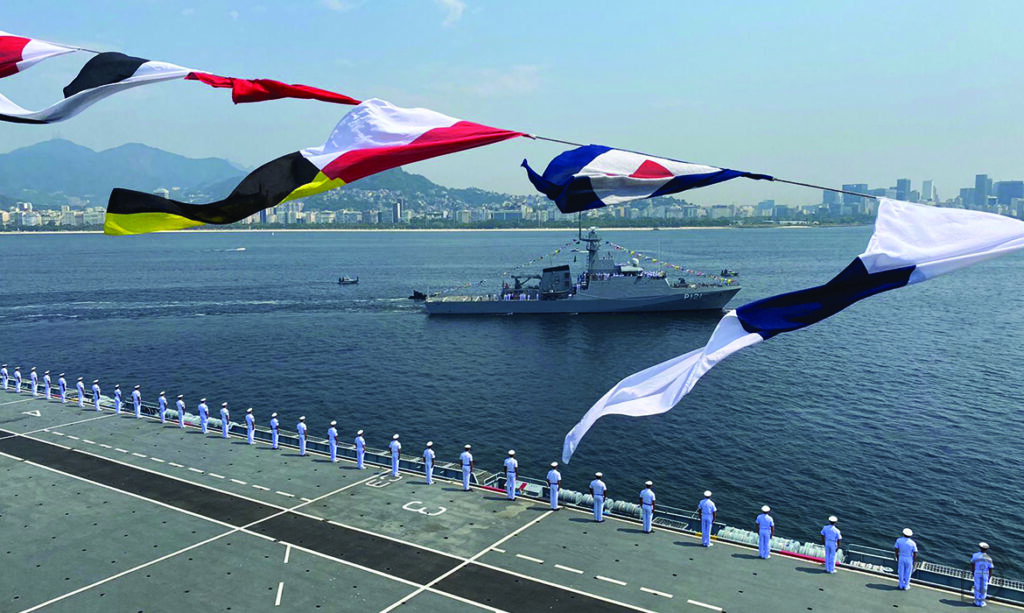

UNITAS LXIII
The Commander in Chief of the Fleet, Vice-Admiral Arthur Fernando Bettega Corrêa said that after the Naval Review, the ships will already move to the sea phase to carry out the UNITAS operation, which has two phases. “The port phase ended yesterday and now we will begin the sea phase, which will take place for about ten days with training in naval operations, maritime safety, search and rescue, among others, promoting interoperability among all the navies that are participating.
About UNITAS, U.S. Secretary of the Navy Carlos Del Toro pointed out during the opening ceremony held yesterday that it is a privilege to see the strong partnerships between the nations participating in the exercise. “Our Sailors and Marines are proud to serve with men and women who wear the clothes of their nations. We are committed to standing side by side to defend maritime routes, protect our sovereign territories, and deter potential aggression.”
*** Translated by the DEFCONPress FYI Team ***
